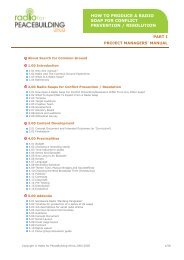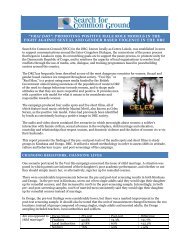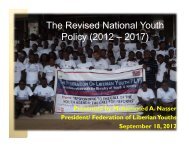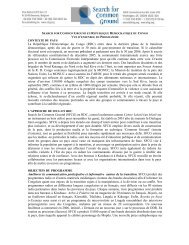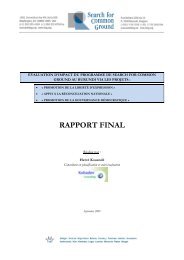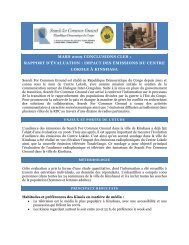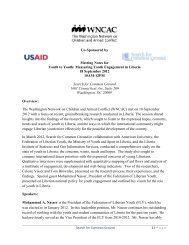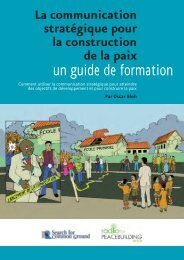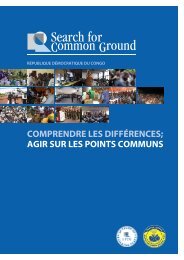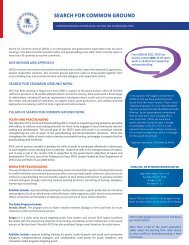The Common Ground Network for Life and Choice Manual
The Common Ground Network for Life and Choice Manual
The Common Ground Network for Life and Choice Manual
Create successful ePaper yourself
Turn your PDF publications into a flip-book with our unique Google optimized e-Paper software.
• Periodically sponsoring a day-long dialogue workshop <strong>for</strong> new people, with “graduates”<br />
invited at the end of the workshop to become participants.<br />
• Holding small evening “living room dialogues” that mix a few “old-timers” with new<br />
people— as a shorter <strong>and</strong> simpler entry step into the group.<br />
• Letting people join over a series of meetings but then calling a day-long workshop <strong>for</strong> the<br />
group to deepen their dialogue <strong>and</strong> relationships.<br />
Anytime there is a new face in a group, attention needs to be paid to articulating the<br />
group’s ground rules <strong>and</strong> its purpose (if one has been developed). Any written materials of the<br />
group (or from this <strong>Manual</strong>) are helpful to “orient” a new participant <strong>and</strong> gain his or her<br />
commitment to the process. Appendix 1.1 is a good h<strong>and</strong>out. We have found that a good opener<br />
in this situation is to ask new people to tell why they are interested in participating in common<br />
ground dialogue (“Why are you here? What are some of your hopes <strong>and</strong> expectations?”) <strong>and</strong><br />
then to ask existing members to tell why they have participated, <strong>for</strong> how long, <strong>and</strong> what they<br />
have gained from their participation.<br />
Meeting Facilitation<br />
In every group meeting, someone needs to have the responsibility <strong>for</strong>:<br />
• guiding the group through its agenda <strong>and</strong> dialogue,<br />
• monitoring whether ground rules are being honored,<br />
• helping the group identify decision-making needs <strong>and</strong> approaches, <strong>and</strong><br />
• identifying the purpose <strong>for</strong> any next meeting.<br />
Chapter Four.<br />
<strong>The</strong> facilitation role <strong>and</strong> ideas <strong>for</strong> how this role can be filled are discussed extensively in<br />
Linking to others<br />
Being in contact with other people around the country who are involved in bringing prolife<br />
<strong>and</strong> pro-choice advocates into constructive dialogue <strong>and</strong>/or joint action is inspiring,<br />
in<strong>for</strong>mative <strong>and</strong> may create possibilities <strong>for</strong> acting together in a broader <strong>for</strong>um. Chapter Nine<br />
provides in<strong>for</strong>mation about how to do this.



